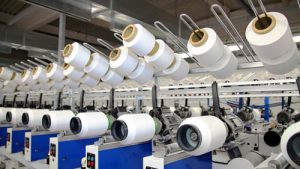The textile materials and fabrics used in automotive applications, such as headliners are usually made of a knitted fabric which is laminated to a foam backing. The knitted material is made from yarn, and once knitted, is dyed and finished to give the fabric the appearance and dimensional stability as specified by the auto manufacturer.
Both the knitted and the laminate utilized in the manufacturing process have the potential to introduce imperfections into the final product. The reason for the fabric defects are typically caused by the yarn, knitting, dyeing and finishing processes. The difference manifests when the raw material, compared to the final knitted material and the foam to which it is laminated as the foam is more than three times thicker than the knitted material. This leads to an inconsistency, leading to long-running fabric defects and the finished product not meeting standards.
Prior to vision aided technology, operators inspected the fabrics on the assembly line and would flag defects by manually placing a mark on the defect location and recording the defect. This process is challenging because it’s difficult to be consistent with not only noticing the defects, but accurately marking and tracking them. A missed defect means the fabric is delivered to a client who would then reject it, ship it back, refuse payment and all of that adds to the bottom line costs for consumers and manufacturers.
The automatic textile inspection system has been implemented in various automotive assembly lines to assure the producer of the fabric maximizes the profit from each batch produced. The system is faster and more accurate than manual inspections as the software detects the defects, classifies and grades them and electronically makes a record of them. Before the fabric is cut at the final step, the operator reviews the data collected and makes allowances in the cuts of the finished product virtually assuring the clients’ finished product is of stellar quality.
Universe Kogaku designs and manufactures optical lenses for industrial, medical, high tech and electronic applications. Standard and custom lens assemblies for scanners, CCTV, CCD/CMOS, medical imaging, surveillance systems, machine vision and night vision systems are also available.